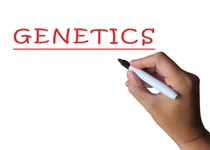 According to a recent study published in the journal Cell Reports, researchers have successfully engineered an ancient virus, “programming” it to deliver gene therapy to the retina, liver, and muscle tissue of mice.
According to a recent study published in the journal Cell Reports, researchers have successfully engineered an ancient virus, “programming” it to deliver gene therapy to the retina, liver, and muscle tissue of mice.
Adeno-associated viruses (AAVs) are small viruses that infect us humans, hiding themselves inside our genetic material and then multiplying—but they do not actually cause disease. This means these specific viruses have great potential to be used as delivery systems for gene therapy.
To achieve this gene therapy, researchers have used AAVs that are present naturally in our current population. The issue with this is that the human body is very adaptable and develops immunity to the common viruses circulating. And immunity means that the gene therapy delivery system won’t work in many cases.
To address this problem, researchers have looked at engineering new AAVs that won’t be recognizable to our bodies, which means they’ll be able to do their delivery job. However, engineering an AAV isn’t an easy task and comes with issues, so a team from the Massachusetts Eye and Ear Infirmary and the Schepens Eye Research Institute in Boston decided to look into the ancestors of our modern-day viruses.
Based on these virus ancestors, the research team engineered nine viruses they believed would be good potential gene therapy delivery systems.
In testing on mice, the oldest virus, “Anc80,” was successful in its task; it zeroed in on and entered the liver, muscle, and retina cells. Moreover, it did so safely, without any negative side effects.
The research team believes these engineered ancient viruses should help make gene therapies safer and more effective for a wider range of patients.
More research needs to be done with this new form of AAVs to further improve their effectiveness and discover more potential uses. For example, the research team is planning further research with Anc80 to find out if it could be used to treat liver disease and some retinal forms of blindness.
Source for Today’s Article:
Paddock, C., “Reconstructing ancient virus should help scientists improve gene therapies,” July 31, 2015; http://www.medicalnewstoday.com/articles/297567.php.
